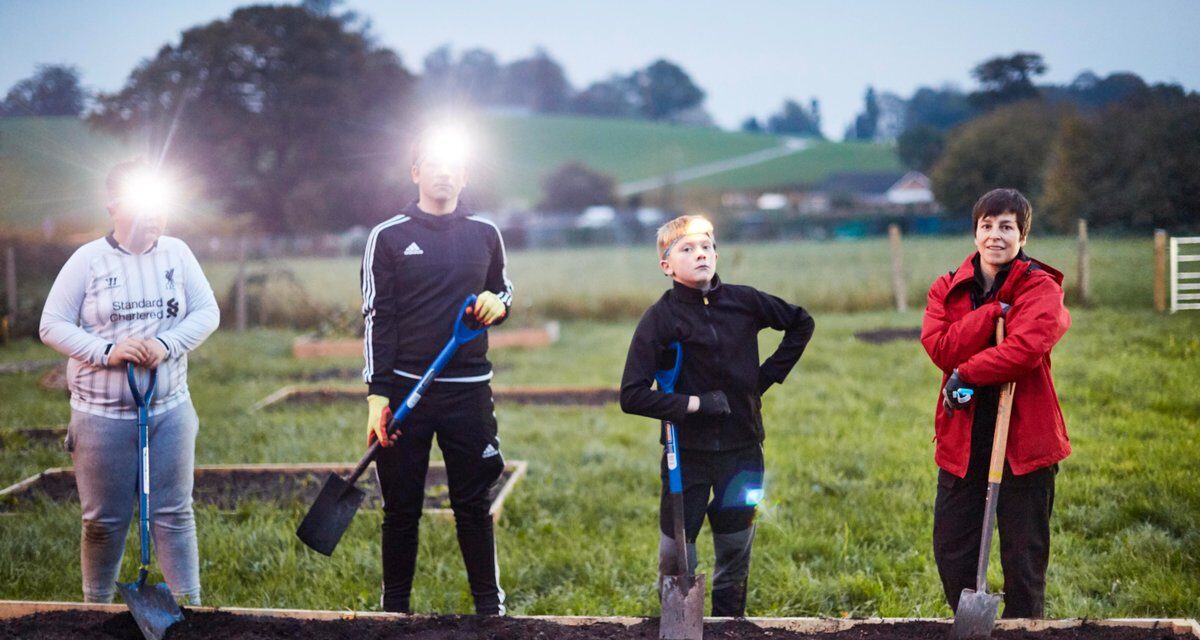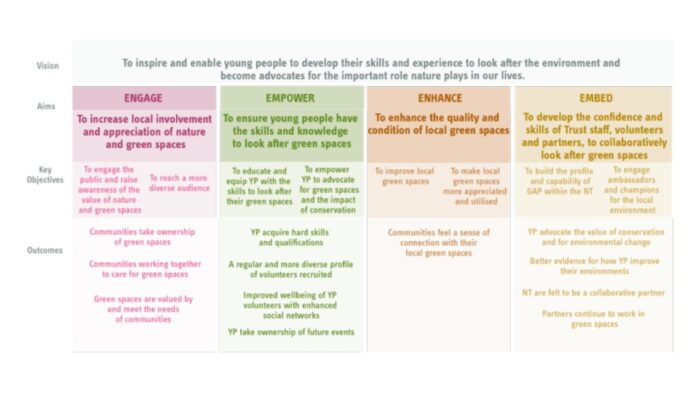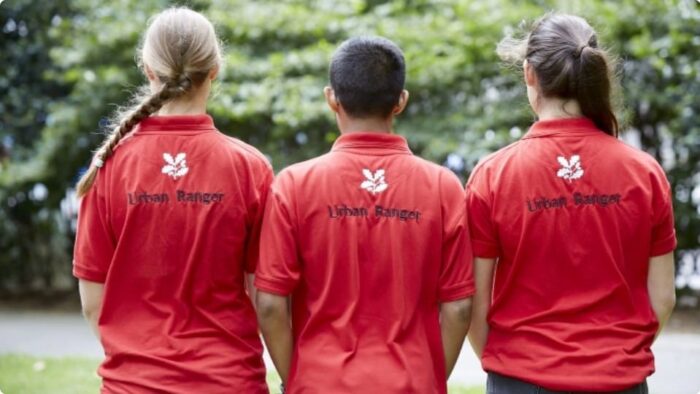- What We Do
- Understanding your audience
- Engaging new audiences
- Designing experiences
- Building loyalty
 Case studies
Case studiesEvaluating the National Trust’s Green Academies pilot
The National Trust’s pilot Green Academies project engaged with over 10,000 young people to develop their skills and connection to nature. We evaluated how well the scheme had delivered on the Trust’s goals, from the perspective of the people involved.
Space to grow
Between 2016 and 2019, the National Trust’s pilot Green Academies Project engaged with over 10,000 young people to develop their connection to nature and provide them with skills to protect their natural environment.

Organised around six Trust sites in England and Wales – all of which border areas of deprivation – the projects were delivered with under-represented young people aged 11-24 in partnership with local schools, social enterprises and youth groups.
Some young volunteers were involved for a one-day interaction. Others made a lasting commitment of several months working, for example, to establish community gardens in their local area.
MHM’s role was to evaluate the scheme’s success from the perspectives of the young people involved, the Trust’s staff and community partners, and to determine to what extent it delivered on the Trust’s aims.
Complex scheme, clear goals
The Green Academies Project had four primary aims:
- To raise awareness and engage local communities with their local green spaces
- To empower young people to take ownership of their green spaces and equip them with the skills needed to be part of the future of nature conservation
- To enhance local green spaces
- To embed the programme and pass on the capabilities needed to manage green spaces to the local communities the sites belonged to.
Our evaluation framework and methodology had to give the many different stakeholders an authentic voice in the feedback. We also needed to distil that feedback into a coherent and accurate narrative to guide the scheme’s long-term future.
MHM used its strategy tree model to design a vision-led, outcome-orientated evaluation framework.

From this we produced a methodology matrix, tailored to the needs of the participants, which enabled us to measure all desired outcomes as performance indicators in the evaluation.
We discovered the scheme exceeded many of its aims:
- Young people had felt empowered to take ownership of the green space
- Participants and partners reported significant improvements in confidence levels, resilience, and health and wellbeing of participants, many of whom were vulnerable, disabled or struggled in a traditional educational setting
- Partner organisations were delighted by the impact in their communities and that once-neglected spaced had been enhanced
- Community organisers were keen to continue with the project, but in the final months of the project they still did not feel confident that they could manage the project without the Trust’s specialist knowledge. There was still work to do to embed these skills within the communities themselves.
Unlocking the secrets of the Project’s success
The Trust needed to understand the Green Academies Project’s critical success factors to take into future projects. We asked partners, participants and staff why the project had worked as well as it did. They told us:
- The Trust made a long-term commitment to engaging under-served communities from the outset. Partners and staff alike had seen shorter term projects fail to gain traction but the Trust’s three-year commitment to Green Academies helped ensure its success
- The Trust had a flexible approach in working with partners, forging truly equal partnerships and had not been prescriptive about young people achieving XYZ to meet the Trust’s outcomes. Flexibility helped partners and the Trust to develop a shared understanding and rapport with young people and helped improve retention
- The Trust’s staff were genuinely interested in the young people and treated them as equals. This was key in empowering the participants to challenge themselves and have a real sense of achievement through taking part.
Next steps – Growing independently

In late 2020 the National Trust identified 15 ‘hub’ properties to be their focus for inclusive best practice in engaging children and young people.
The hubs will work together as a network in support of their Everyone Welcome commitment to making long-term and deep organisation-wide change to become a Trust that is more inclusive and welcoming for all.
All six GAP properties are included as children and young people hubs – due in part to the evidenced impact of their delivery through this programme.
Three of the properties have secured additional funding to continue delivering GAP-influenced community engagement, with the opportunity to share and positively influence the inclusive practice of GAP through the wider network of hubs and beyond.
Photo credits: National Trust
“We’ve lived here for about 20 years and Morden Hall Park was always underused and downtrodden. But now is the first time that we see this wonderful community and these activities here, so we’re quite enjoying it.”
Local resident, Morden Hall Park
- Engaging new audiences
- Understanding your audience
